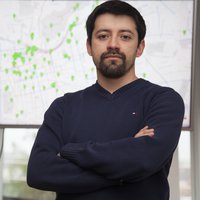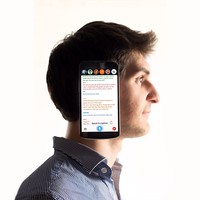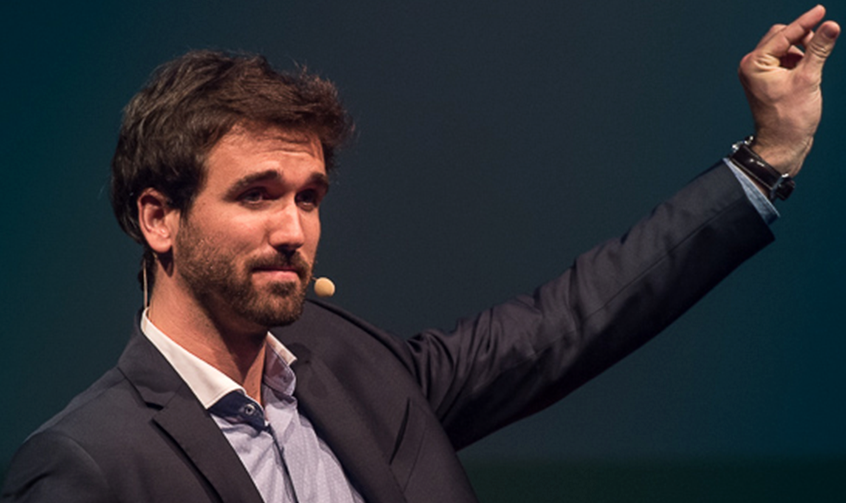How would we see life differently if we discovered that thousands or millions of inhabited worlds exist on other planetary systems thus far invisible to us? Julien de Wit believes that this change in perspective could transform us as a species. This young, postdoctoral researcher at the Earth, Atmospheric and Planetary Sciences Department of the Massachusetts Institute of Technology (MIT, US) and one of MIT Technology Review, Spanish edition´s Innovators Under 35 Europe 2017 believes that our understanding of the formation and evolution of planets "for centuries has been based on observations of a single sample: our solar system," ignoring other potential "archetypes" or organizational matrixes. And the way to challenge this "narrow-minded and outdated" perspective consists in looking deeper, according to De Wit.
To this end, the young researcher has developed new analysis and modelling techniques capable of gathering information related to the hitherto unknown characteristics of planets located outside our solar system. One of these tools, developed by De Wit in 2011, allowed him to determine the total mass of small exoplanets which preexisting techniques are unable to obtain. This information, combined with atmospheric data and meteorological conditions on the planet´s surface, allow scientists to evaluate the potential inhabitability of these worlds. Later, using data captured by the Spitzer Telescope, De Wit developed another technique that generates a two-dimensional map of the surface temperature of an exoplanet defined based on the variations in the signals produced when different "bands" of the signal disappear and reappear during an eclipse. The young researcher used this technique to generate the first map reflecting the cloud coverage of an exoplanet based on its atmospheric characteristics, and to determine that another exoplanet could be a lava-ridden super-Earth.
In 2016, De Wit was finally able to apply his tools to the study of small, temperate planets with the potential to sustain life. The opportunity arose with the discovery of the Trappist-1 system. An international consortium of astronomers had observed three planets of a similar size to Earth orbiting a very cold and dim star. These were the first potentially inhabitable exoplanets to be studied in detail using existing techniques and infrastructure, since the weak light given off by its star did not suffice to illuminate these planets. "The signal we received was 80 times larger than [it would have been] if they were orbiting a star like our Sun," De Wit explains.
The young innovator realized that two of these planets would pass the Trappist-1 at the same time, and he used the transition data captured by the Hubble Telescope to characterize their atmospheres. The results allowed De Wit to determine that these planets are similar to rocky planets like Earth and Mars, as opposed to large gaseous planets like Neptune.
Thanks to new observations made with the Hubble and the future James Webb Telescope, soon scientists will be able to glean more information about the atmospheres of these planets (such as the presence or absence of water vapors, carbon dioxide and ozone). The screening technique used to search for potentially inhabitable planets like those used by De Wit, however, are key to a previous stage, due to the short lifecycle of these installations.
Continuing this triage is the objective of the SPECULOOS project (which spawned the Trappist-1 prototype), a network of four telescopes located in Chile dedicated to searching for planets orbiting ultracold stars. De Wit is now trying to extend this network to the Northern Hemisphere to reach the greatest number possible of exoplanets.
To date, our solar system has been our reference planetary model from which we observe the universe, but in fact ultracold stars are the most abundant. For this reason, De Wit considers Trappist-1 to be the "Rosetta stone" of the search for Earth-like planets, and he is convinced that if we can confirm that those systems are archetypal, our vision of the place we occupy in the universe would change radically.
The Data Science Research Director at Vodafone and jury member for the Innovators Under 35 Europe 2017 competition, Nuria Oliver, describes De Wit as a "very impressive individual due to his great intellect, capacity for strategic thinking and his development of new exoplanet discovery techniques." This expert deems the potential social impact of locating inhabitable planets as "enormous, both in terms of our own future and our understanding of life on Earth."
By Elena Zafra
Translation: Teresa Woods




